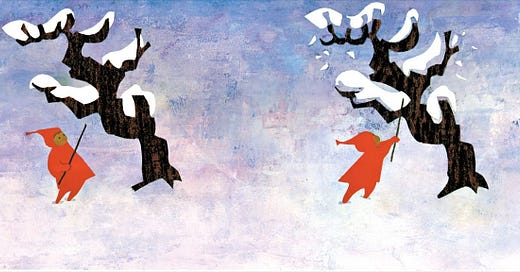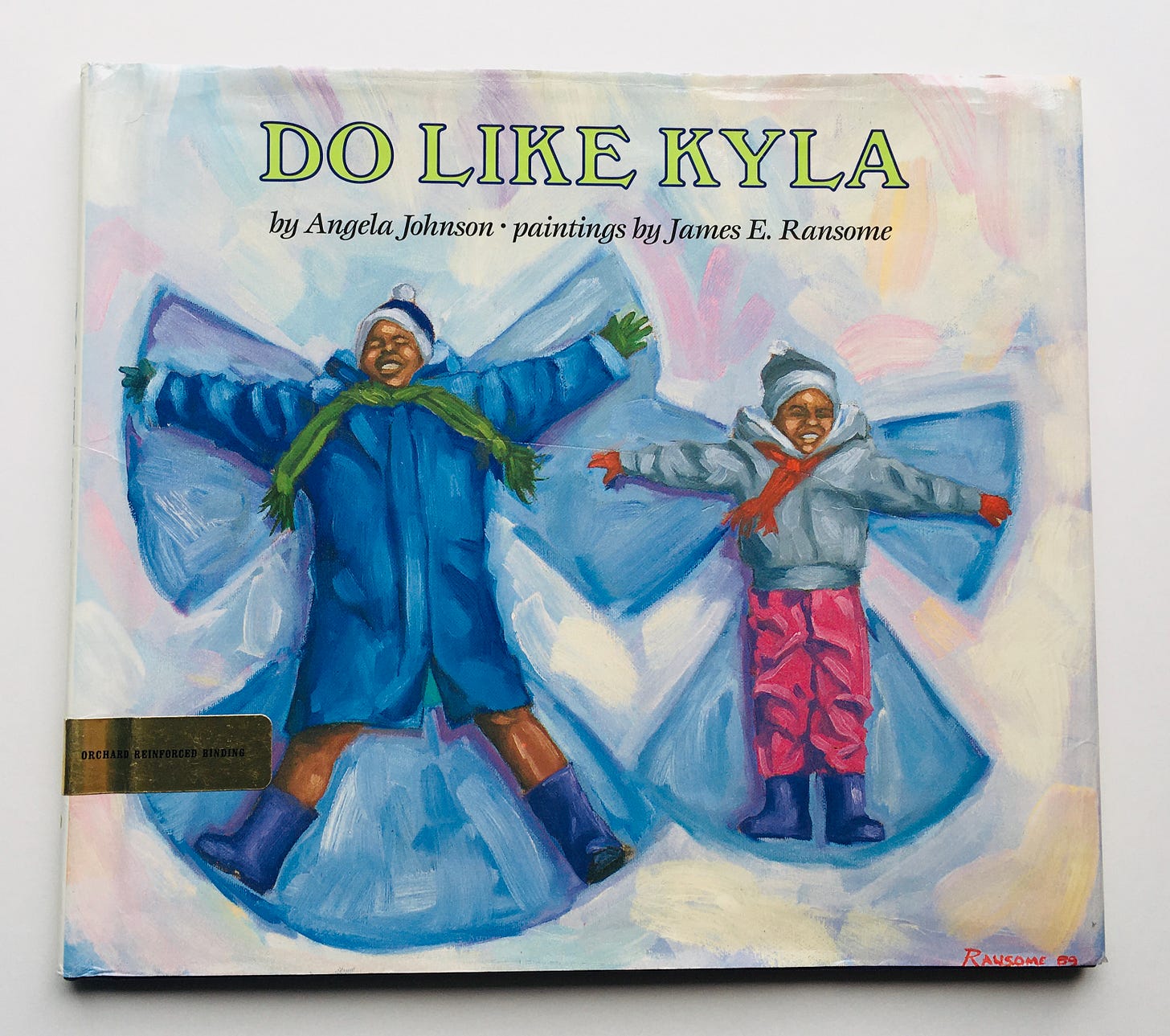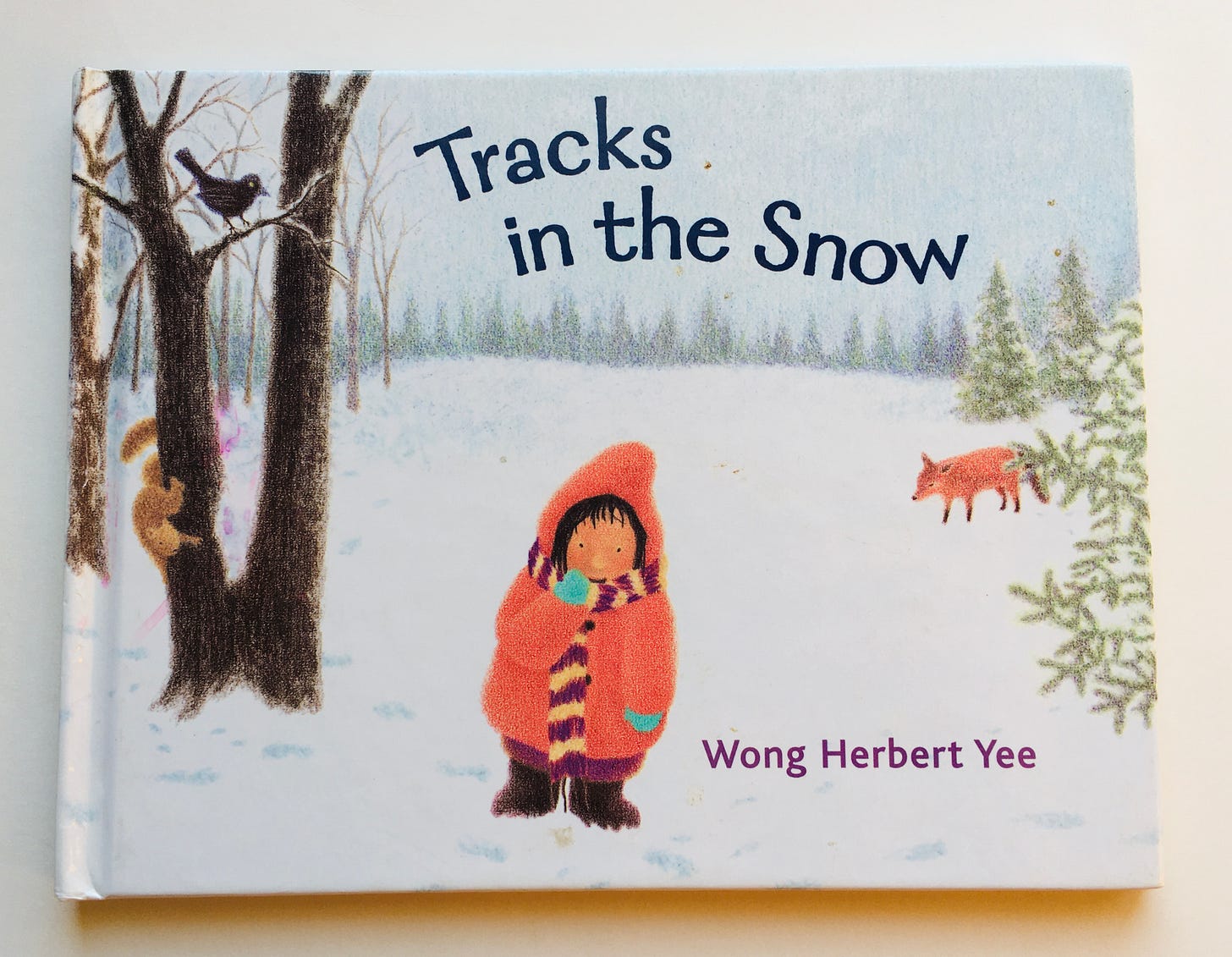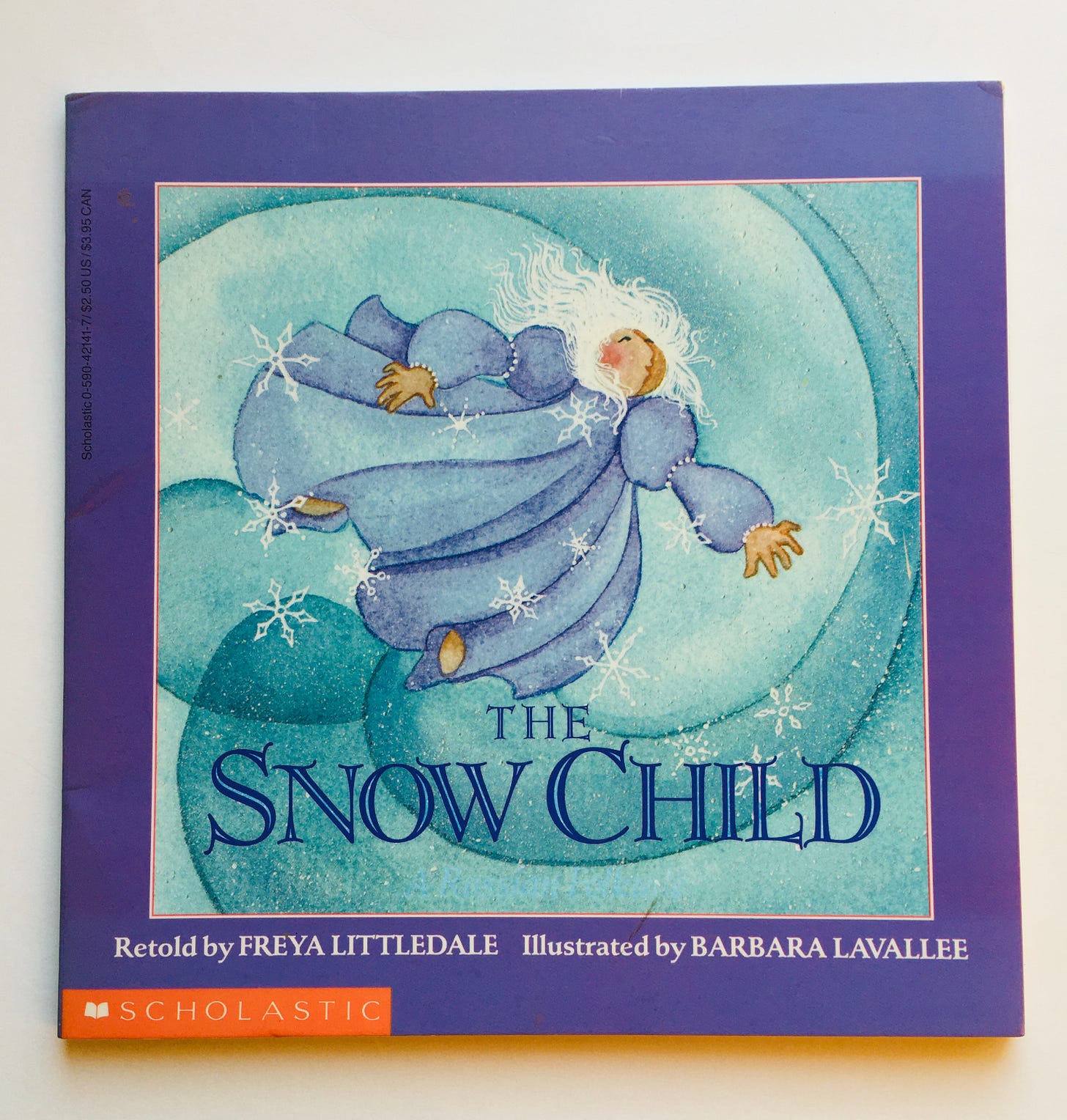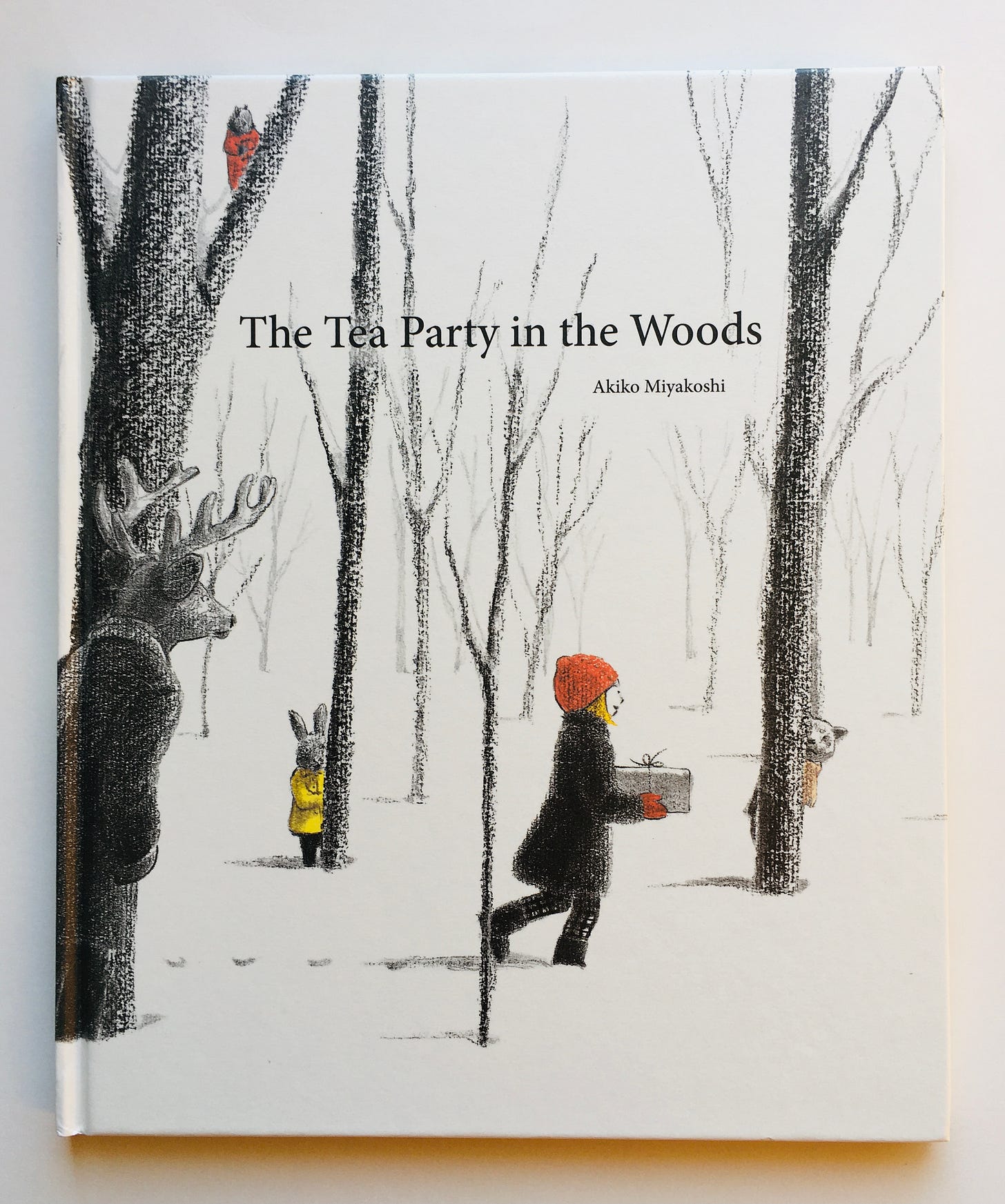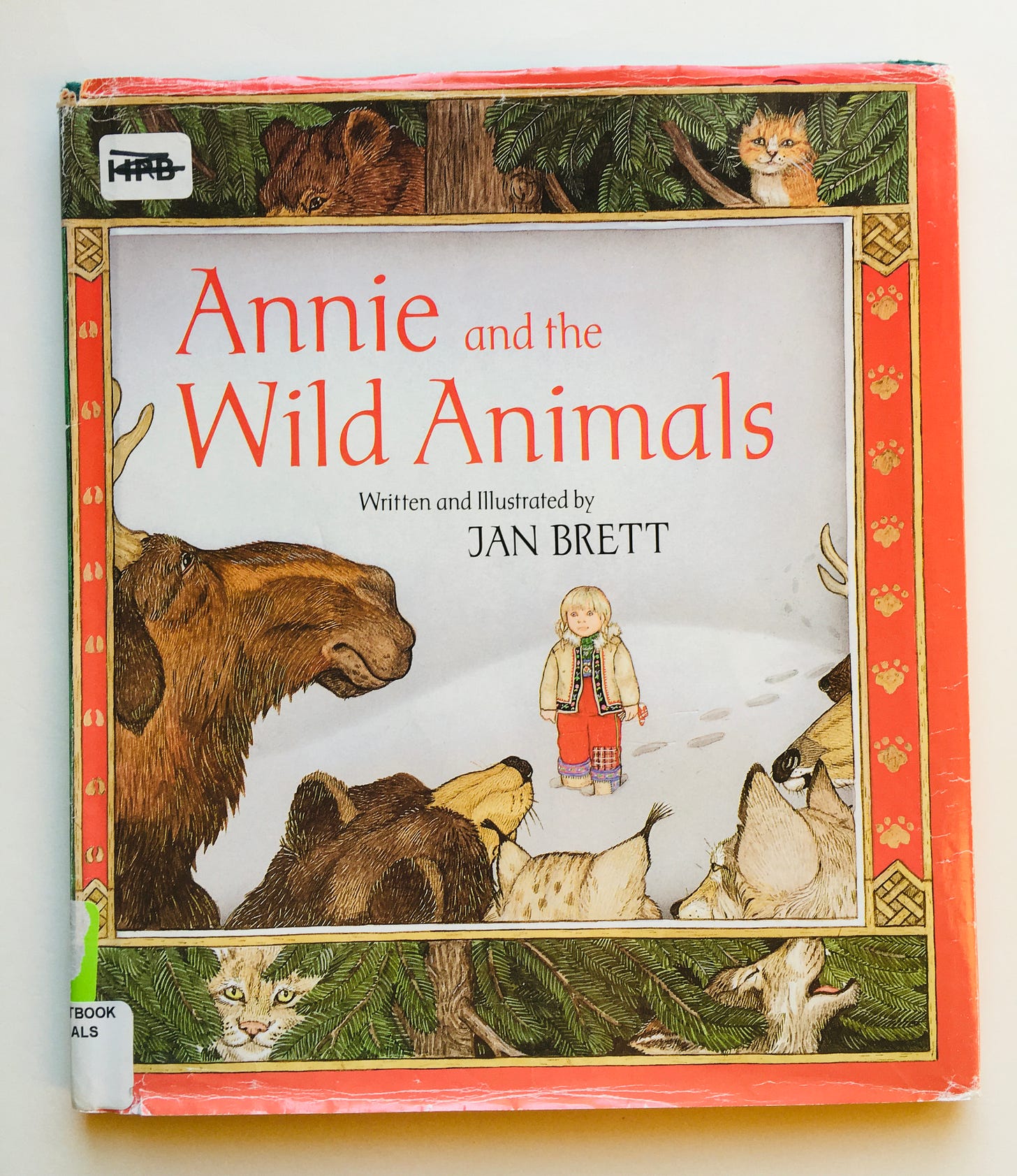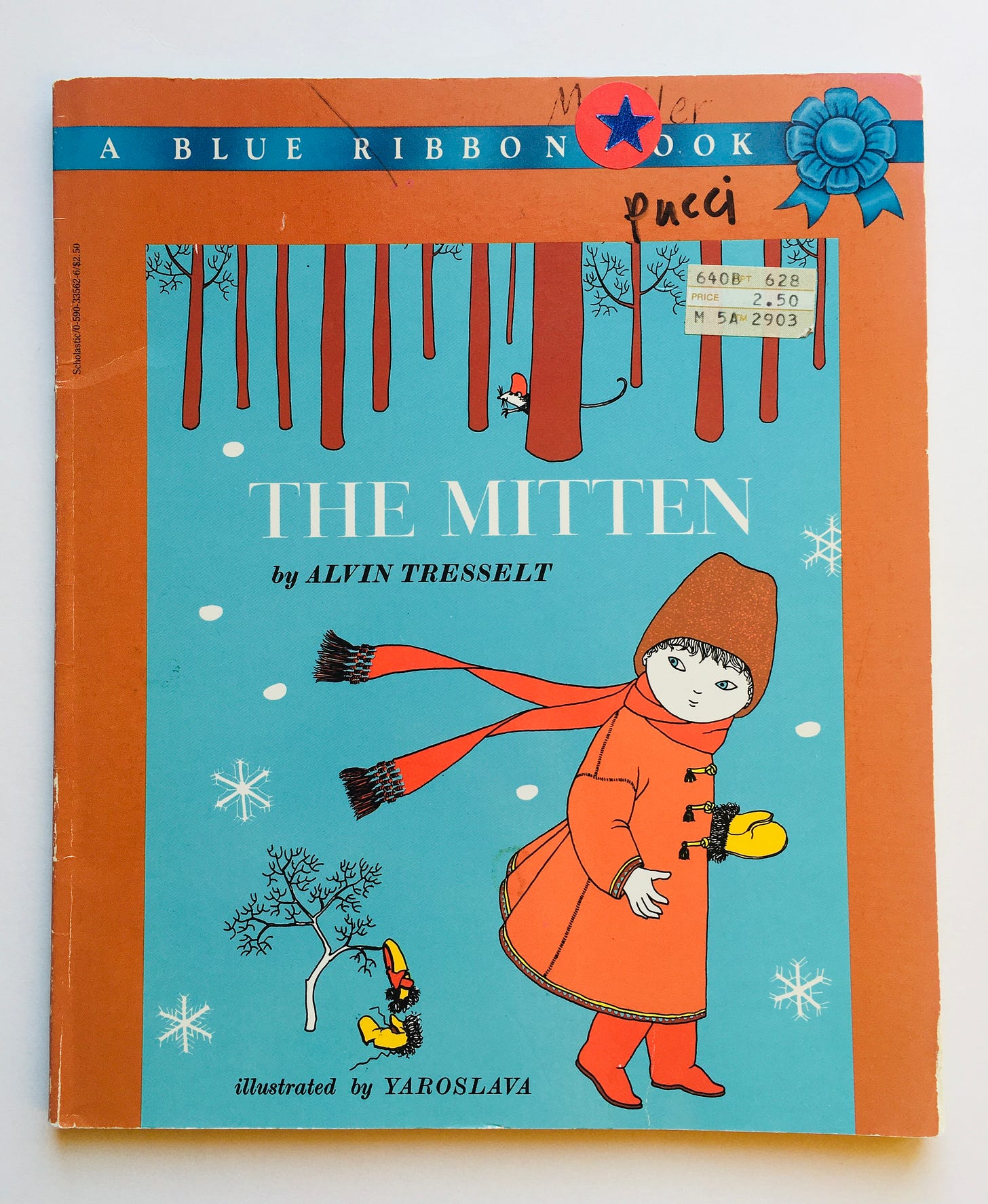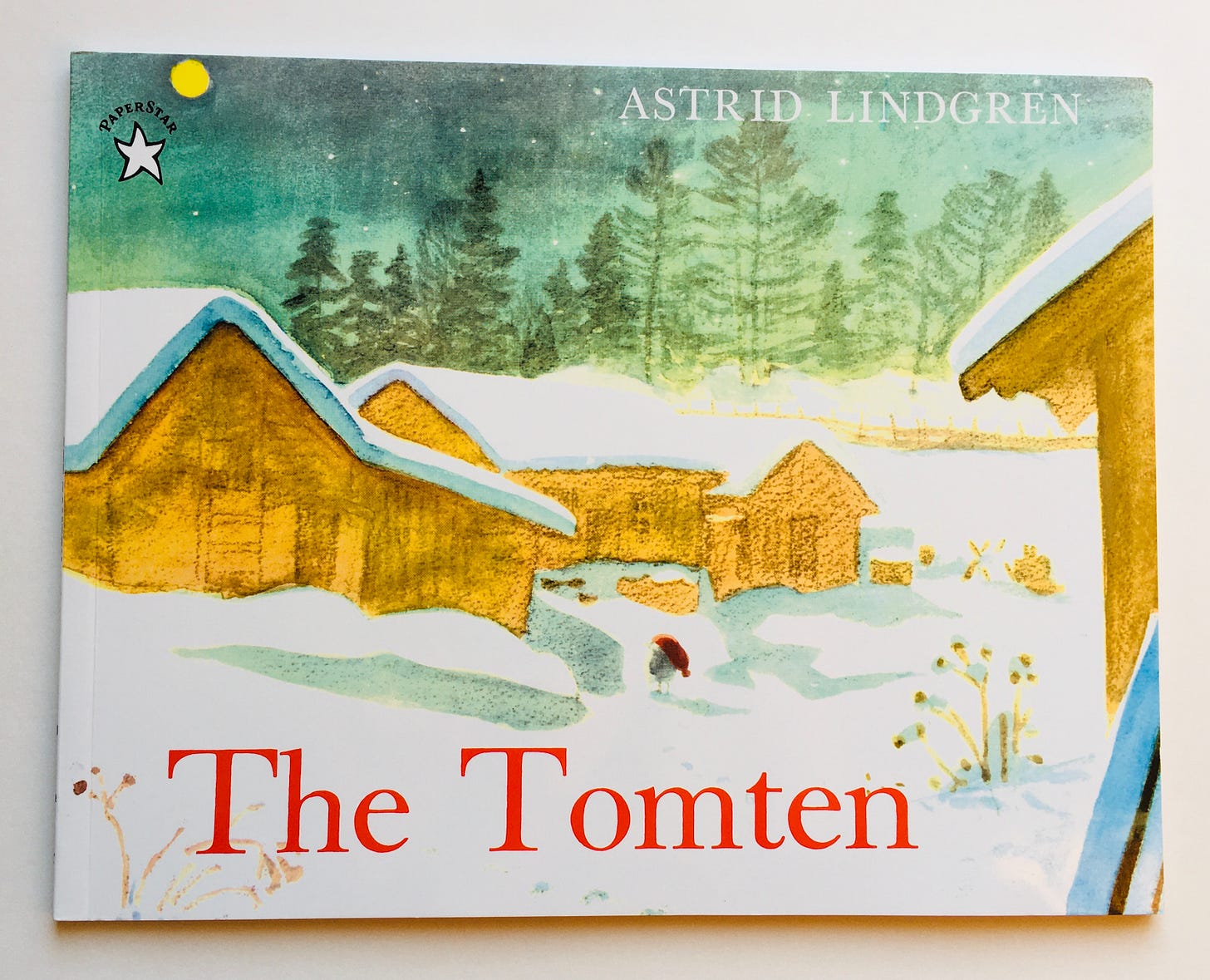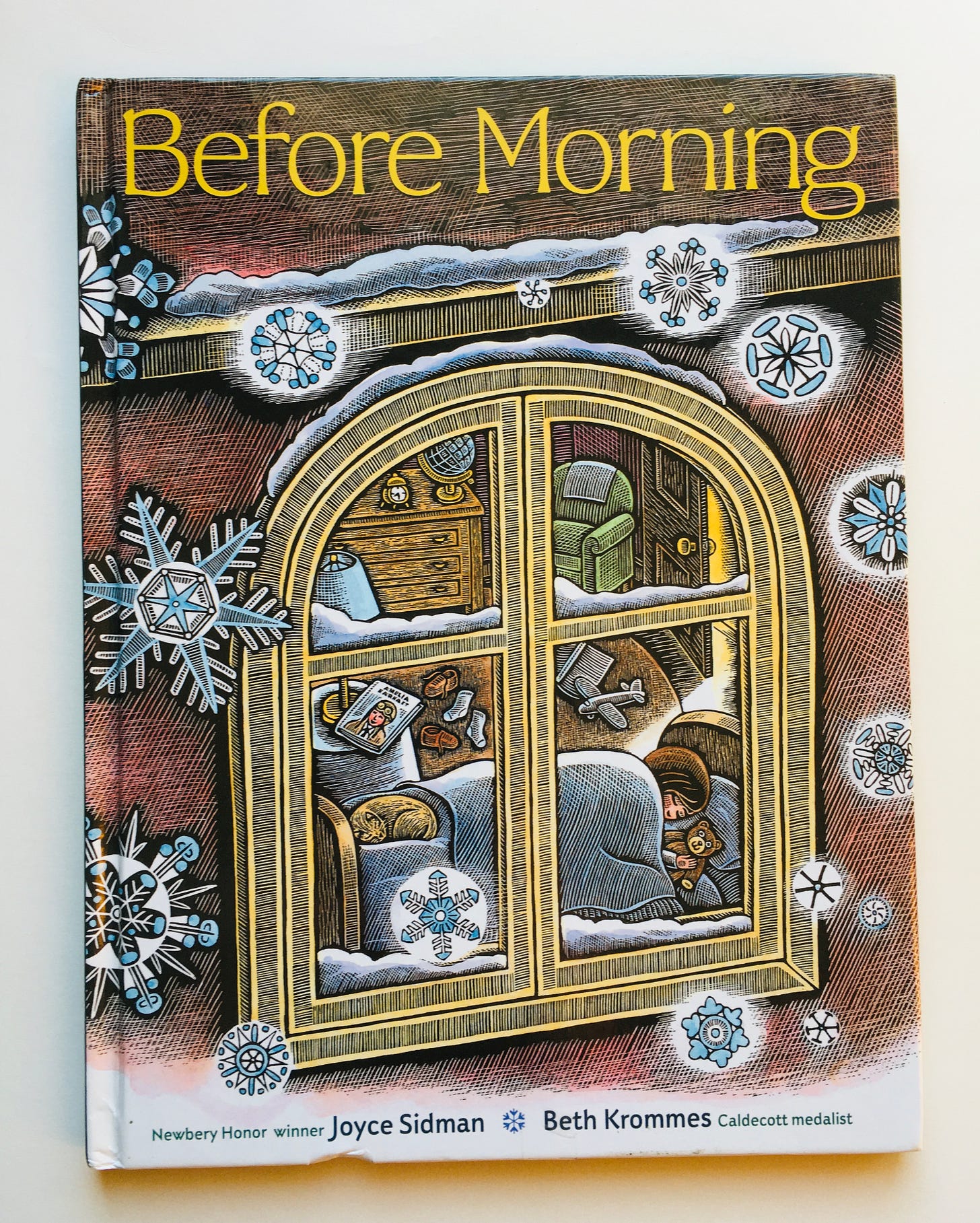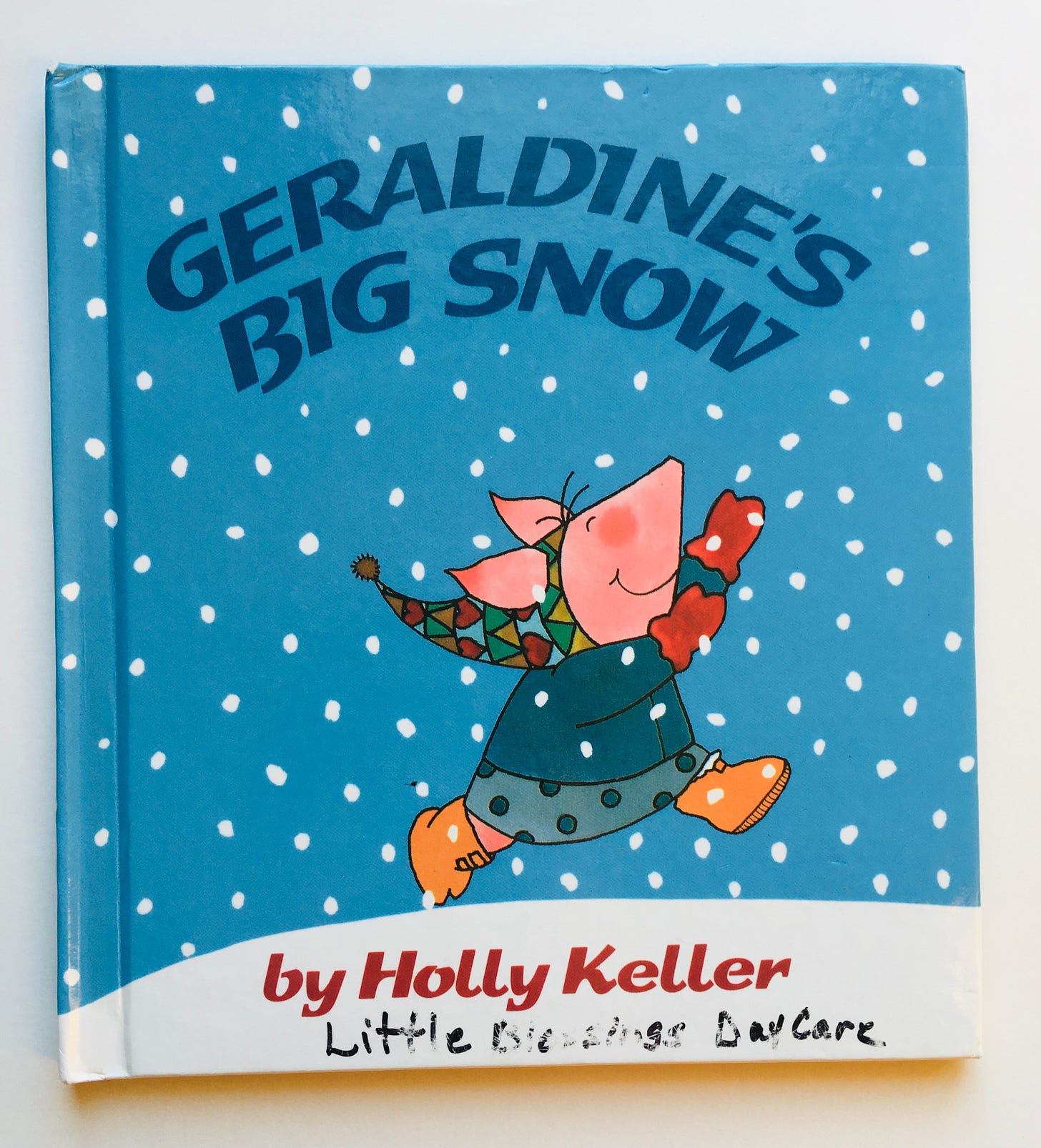*name that poem!
Before we begin, let’s just say upfront that of course the greatest winter book of all time is The Snowy Day by Ezra Jack Keats. It’s not just that its cultural, historical, and literary impact is enormous (the president of Scholastic Book Clubs, Judy Newman, does a wonderful job writing about the importance of this book, and, fun fact: it is also the most checked-out title in the history New York Public Library), it’s that it’s simply a great book. I mention The Snowy Day for two reasons: first, to just get it out of the way so that I don’t even have to try to categorize it (review it, recommend it), because it’s beyond categorization; and two, so that just in case for some unfathomable reason I can’t even begin to grasp you have somehow lived a life up until this point without knowing about it, that you know about it now. Possibly — probably — the greatest book of the 20th century. Not “children’s book.” BOOK.
As I’ve mentioned a few times, one of the benefits of being a Bookshop.org affiliate is that I can create booklists for you, and I have done just that. Visit my storefront to browse and purchase the titles on my list, “Books for winter.”
I’ve been excited to send this issue for a month, so LET’S DO IT!
Do Like Kyla by Angela Johnson, illustrated by James E. Ransome (1990)
I have two girls, so I am always on the hunt for books about sisters, and the minute we read Do Like Kyla I knew I’d found an absolute gem. Here the reader meets a girl — unnamed, the little sister — as soon as she wakes up. “In the morning my big sister Kyla stands at the window, tapping at the birds. I do like Kyla, only standing on the bed.” She proceeds to do like Kyla all day — getting dressed, eating breakfast, walking to the store — until finally, at bedtime, Kyla says, ‘Birds must be asleep.’ I tap at the window… and Kyla does just like me.” If it seems straightforward, that’s because it is, and yet there is much to appreciate here — anything Johnson writes is gold, for one thing, and Ransome’s quiet but inviting paintings really complement her warm, sincere storytelling. This is a sweet glimpse into two ordinary lives, but what makes it special is that through the eyes of this little sister, these everyday actions taken one after another offer a welcome perspective: what things look like, how we feel, when we love someone.
Tracks in the Snow by Wong Herbert Yee (2003)
“Tracks in the snow. Tracks in the snow. Who made the tracks? Where do they go?” We’ve been reading this book for enough years now that sometimes when my children and I are outside in winter, we’ll repeat these lines to one another, laughing. It’s hard not to smile when we think of the little star of this title — a girl who one day notices tracks in the snow outside her window. She goes out to explore the tracks — through her yard and garden gate, in and out of rocks, along the pond, across a bridge and into the woods beyond. Eventually she grows cold, “and there’s still no sign of it,” but when she turns for home she realizes (it’s so endearing): the tracks are her own. This is, in my opinion, the best of Yee’s series of seasonal titles (I wrote about Summer Days and Nights in my special edition on summer) — the prose flows in a way that makes it really pleasurable to read aloud, and the little girl with her bulky winter coat and insatiable curiosity is at her absolute cutest here. I give away or sell a lot of titles, but some I just can’t part with because they’ve had a special place in our hearts (and someday I want to gift them to my grown children) — this one’s a keeper.
The Snow Child retold by Freya Littledale, illustrated by Barbara Lavallee (1978)
The Snow Child is a fairly well-known Russian folktale, retold here by Freya Littledale in an inviting and lovely way. The story is always a variation on this: an old man and his wife are unhappy because they are unable to have a baby. One winter’s day they notice children outside their window, building a snowman, and the old man has an idea that he and his wife should build their own. They do, and their creation is so lovely the woman wishes she were real. To their great surprise, the snow child comes to life, bringing immense joy to the couple: they cherish her, take care of her, keep her safe, and all three live together in complete happiness throughout the winter. Of course, this period of bliss cannot last, and when spring begins to come, the snow child feels it: she can no longer go out to play. She grows sad, her lips lose their color, and one morning she tells the old couple, “I must leave you now.” They’re heartbroken as they let her go, thinking they’ll never see her again. “Then the following winter, when the first snow fell, the old couple looked out the window. There in the garden stood the snow child.” Lavallee’s illustrations bring this tender story to life in an enchanting way that shows the relationship between grief and devotion. This is a story as much about loss as love — how sometimes these things walk side by side — which is to say, this is a story about the human condition.
The Tea Party in the Woods by Akiko Miyakoshi (2011)
On the morning that Kikko wakes up to a winter wonderland and her father leaves behind a pie he intended to take to her grandmother, Kikko offers to catch up with him, struggling her way through the quiet world of deep snow (she falls and the box with the pie inside is crushed). When she sees her father go into a strange house she has never noticed before, she peeks through the window to discover it’s not her father she’d been following, but rather a great big bear. Thus begins a magical adventure full of incongruous and delightfully bizarre things, like animals who are not only inside a house together, all dressed up and talking, but hosting a tea party. They welcome Kikko as a special guest, eventually assembling a new pie for her grandmother and parading off through the woods together to deliver it. As a child I wanted so badly for this kind of magic to be true — Borrowers living in the walls, one day my stuffed animals would speak to me, a whole world of mystic intrigue just waiting inside a large hole in a tree — that I love any narrative that captures that, even a little. Miyakoshi goes beyond a little here and captures a lot — her muted charcoal illustrations lend a dream-like quality to what’s happening to Kikko, her characteristic storytelling holds in perfect balance fascinating possibility and explanation (in other words: she tells just enough). This is an inviting read full of charm and excitement — the best an escapade can offer, if you ask me.
Annie and the Wild Animals by Jan Brett (1985)
I guess I am just going to keep writing about Jan Brett books, not least because my 6yo keeps looking over my shoulder and saying with a kind of tolerant impatience, “ARE YOU WRITING ABOUT JAN BRETT?” but also because old JB has grown on me since I first wrote that I could take or leave her (in issue No. 5; maybe exposure therapy works). In any case, I’ve always liked Annie and the Wild Animals — it has historically been one of our favorite winter books — the story of a little girl whose cat, Taffy, has become remote and then disappeared, so in her loneliness she begins leaving corn cakes at the edge of the wood in hopes of calling in a new friend. Her ploy works, and only too well — a succession of animals arrives, but none quite right (a moose is too big, a wildcat too mean, a bear too grumpy, etc). Eventually, just when the situation gets out of control (the animals want more food, Annie is out of corn cakes and she just wants Taffy back), the breeze changes and spring begins to come. The demanding animals return to the forest, and Taffy comes home — with three little kittens in tow. Brett’s margin clues, always used to foreshadow what’s coming next, are precious here (a little less complicated than in her other titles, so this would be great introduction to her work for toddlers and preschoolers who might miss the finer details in some of her more lavish books), as is the sweet and satisfying story. This is a warm book, perfect for winter.
The Mitten by Alvin Tresselt, illustrated by Yaroslava (1964)
There are many versions of this old Ukrainian folktale, many of them quite good (I am also a fan of those adapted by Jim Aylesworth and Jan Brett, which I’ve mentioned on my “Also highly recommended” list below), but there is something I find especially unique and charming about this one. Maybe it’s Yaroslava’s somewhat old-fashioned line drawings (there is something about them that reminds me of Pysanky eggs), maybe it’s that Tresselt offers an excellent adaptation (this is really a cumulative tale — Aylesworth preserves this aspect in his version — but to be honest I don’t relish reading cumulative tales and I think the heart of this story is the same even without the repetition), but it’s my favorite. The story’s basic premise is this: a child loses a mitten in the woods, and a succession of bigger and bigger animals comes along to get warm inside it, until the mitten bursts. It’s the type of simple yet utterly satisfying situation — the dilemma, the natural consequences, the resolution (which is sometimes no resolution) — that makes sense to even the smallest among us, which is, of course, why folktales endure. It doesn’t matter that this title is from 1964 — it feels fresh and interesting and right regardless of it age — which is also why folktales endure.
The Tomten by Astrid Lindgren (1960)
I’ve loved Astrid Lindgren since I was a kid reading Pippi Longstocking, but it wasn’t until I became obsessive about children’s books that I learned about her lesser-known characters and titles (Ronia, the Robber’s Daughter, the Lotta series, the Karlsson-on-the-Roof series, The Children of Noisy Village — this doesn’t begin to cover it). When my 6yo fell in the love with Pippi too (Esther Benson does a wonderful job narrating for Random House/Listening Library’s version on cd) and I thought, why are we not reading more Lindgren? Then a few months ago I watched the 2018 Swedish film, Becoming Astrid, about her early life (before she became a famous author) and came to appreciate her and her work on a much deeper level. (Her young adulthood was absolutely heartbreaking — I still think about this movie often and highly recommend it.) Enter Lindgren research, and the realization that we already own one of her most famous titles: The Tomten. A tomten (or tomte, also called a nisse in Denmark) is a small, gnome-like creature from Scandinavian folklore that lives in homes and/or barns as a secret caretaker. Tomten are often cranky and volatile (they become very angry if offended and will wreak havoc, even killing livestock), about the size of a large toddler, who love horses and are total loners (MY KIND OF PEOPLE).
In Lindgren’s title, the reader is introduced to this unique little fellow as he “moves about in the moonlight,” checking on things in the barn, talking to the animals in a language only they can understand, making sure all is well in the house, peeking in at the adults and the children alike. The idea of this benevolent being watching over the family and their world as they sleep has a deeply quieting and comforting feeling to it: “Winters come and winters go, year follows year, but as long as people live at the old farm in the forest, every night the Tomten will trip around between the houses on small silent feet.” I for one welcome the sharing of this sort of assurance — that time goes on, seasons change — but we are never, not really, alone.
Before Morning by Joyce Sidman, illustrated by Beth Krommes (2016)
Sidman and Krommes have won the Newbery Honor and the Caldecott medal, respectively, so you know right from the get-go that their collaboration is going to be good: and lo, it is. This is the extraordinarily simple story about a snowstorm — the narrative is sparse, a mere four sentences, which is really an extended poem — but don’t let that fool you: Sidman’s spare prose is as gorgeous a mediation on snow and winter as has ever been written, and Krommes’ dense, detailed etchings tell the story-behind-the-words so beautifully that put together these two talents are breathtaking. As if that wasn’t enough, the tale itself is special: the reader sees a little girl saying goodbye to her mother, a pilot, in the early-morning darkness of winter. The mother travels to the airport, and waits while the snow comes down in the world around her until suddenly, unexpectedly, we see a wish granted: a snow day! Work canceled. And the sweet return home. I love reading this title to my children over breakfast for its incantatory beauty (notice how without the images, you really have no idea what the story is about):
In the deep woolen dark,
as we slumber unknowing,
let the sky fill with flurry and flight.
Let the air turn to feathers,
the earth turn to sugar,
and all that is heavy turn light.
Let quick things be swaddled,
let urgent plans founder,
let pathways be hidden from sight.
Please — just this once —
change the world before morning:
make it slow
and delightful…
and white.
A note from Sidman at the end of this book talks about wishes and invocations, and the power of words. She writes, “Maybe speaking something out loud is the first step toward making it happen.” It’s a powerful idea.
Geraldine’s Big Snow by Holly Keller (1988)
Geraldine’s Blanket was one of my most precious books as a small child (I could relate to loving one thing with an unmatched passion — I am 38, a grown-ass woman, and I still sleep every single night with my beloved bear, Arctic) so I have a soft spot for Geraldine. In this title she is her brightest and best self, waiting not-so-patiently for the big storm the radio promised is coming. She brings out her new sled and puts her boots by the door, she is READY, but the snow is not. The reader joins her as she makes her rounds in the neighborhood, visiting neighbors preparing for the snow in their own way — buying apples, checking out library books (yes! same!), filling up the bird feeders — finally doubting the news and heading for bed. When the magic happens overnight, it’s with the fresh and lovely perspective of a small child looking out the window to see a world covered in white — children seem to love reading about this almost (but not quite) as much as actually experiencing it — that Geraldine awakens, which is where all the sweetness in this title lies. This book reflects this marvelous, magical experience back to kids and reminds those of us reading it that in winter, as in life, it really is the little things.
Also highly recommended
The Mitten retold by Jim Aylesworth
Winter Story by Jill Barklem (part of the Brambly Hedge seasonal series)
Extra Yarn by Mac Barnett
SkySisters by Jan Bourdeau Waboose (my fellow Wisconsinites — this is an excellent one to add to your library if you are looking for titles about the Native Nations of Wisconsin; this is a story about Ojibway sisters)
The Hat by Jan Brett
The Snowy Nap by Jan Brett
Ten Ways to Hear Snow by Cathy Camper
Winter Tales: A Collection of Seasonal Stories for Young Children by Suzanne Down
The Animals’ Winter Sleep by Lynda Graham-Barber (nonfiction science)
Angelina’s Ice Skates by Katharine Holabird (for as much as I dog on Angelina I do seem to like her, huh?)
Winter Days in the Big Woods by Laura Ingalls Wilder (one of the My First Little House Books)
Winter on the Farm by Laura Ingalls Wilder (one of the My First Little House Books)
Mama, Do You Love Me? by Barbara M. Joosse
Over and Under the Snow by Kate Messner (part of the four-book, nonfiction Over and Under seasonal series)
Missing Mittens by Stuart J. Murphy (a cute living math book about even and odd numbers)
The First Snowfall by Anne Rockwell
Grandmother Winter by Phyllis Root
Snow by Uri Shulevitz
Brave Irene by William Steig (Meryl Streep does an especially good job of narrating this on audio, available via Audible)
Owl Moon by Jane Yolen
A category of their own: bears!
…winter’s unofficial superstar (which is kind of amazing, given that they basically disappear and do nothing except stay alive).
How Do Bears Sleep? by E.J. Bird
The Three Snow Bears by Jan Brett
The Winter Bear by Ruth Craft
Old Bear and His Cub by Olivier Dunrea (this is a super sweet and touching grandfather-grandchild tale)
Dozens of Doughnuts by Carrie Finison
In My Den by Sara Gillingham (babies love any of Gillingham’s books)
A Bear’s Year by Kathy Duval and Gerry Turley
Hibernation Station by Michelle Meadows
Share Some Kindness, Bring Some Light by Apryl Stott
The Bear’s Winter House by John Yeoman
Another category of their own: snowplows
Just as fascinating as the garbage truck only much more elusive…
Best Little Wingman by Janet Allen
Good Morning, Snowplow! by Deborah Bruss (don’t miss this one if you have fans of Sherri Duskey Rinker’s Construction Site books)
The Little Snowplow and its sequel, The Little Snowplow Wishes for Snow by Lisa Koeler (the latter is a good book if you don’t get a lot of snow where you live)
Katy and the Big Snow by Virginia Lee Burton (one of our favorites — classics are classics for a reason!)
Axle Annie by Robin Pulver
Small Walt by Elizabeth Verdick (this is the first in a series of Walt books)
Poetry (of course poetry)
Iguanas in the Snow: And Other Winter Poems/Iguanas en la Nieve: Y Otros Poemas de Invierno by Francisco X. Alarcon (one of a seasonal bilingual poetry series)
Stopping by Woods on a Snowy Evening by Robert Frost, illustrated by Susan Jeffers
It’s Snowing! It’s Snowing! Winter Poems by Jack Prelutsky
Winter Poems selected by Barbara Rogasky
Winter Bees & Other Poems of the Cold by Joyce Sidman
Especially for babies and toddlers
Hello, Snow! by Wendy Cheyette Lewison
Pippa and Pelle in the Winter Snow by Daniela Drescher
Oh! by Kevin Henkes (this was the first book I acquired for our winter collection, when my first-born was 7mo — it’s super simple and sweet and I’ll love it and keep it forever)
Walking in a Winter Wonderland as sung by Peggy Lee
Winter by Gerda Muller (a wordless book, but as I wrote in my special edition on summer, this seasonal series is wonderful)
First Snow in the Woods by Carl R. Sams and the follow-up, Stranger in the Woods
Happy Bird Day by Carl R. Sams
Biscuit’s Snowy Day by Alyssa Satin Capucilli (I maintain that the only way to survive Biscuit books are to lean in, accept, and woof!)
For older readers, or for read-alouds
Mr. Popper’s Penguins by Florence and Richard Atwater
The Bears on Hemlock Mountain by Alice Dalgliesh
Odd and the Frost Giants by Neil Gaiman
Moominland Midwinter by Tove Jansson
Hans Brinker, or the Silver Skates by Mary Mapes Dodge (don’t let the publication date of 1865 deter you — I loved this book as a kid)
Miss Hickory by Carolyn Sherwin Bailey
Miracles on Maple Hill by Virginia Sorenson
Everything else
Huggle’s Snow Day by Tedd Arnold (bonus points here for characters named Grubble and Booter, which I can never read without literally LOL)
Animals in Winter by Henrietta Bancroft and Richard G. Van Gelder (nonfiction science)
In the Snow: Who’s Been Here? by Lindsay Barrett George
All Around Bustletown: Winter by Rotraut Susanne Berner (a wonderful wordless book/seek-and-find)
Ollie’s Ski Trip by Elsa Beskow
When Winter Comes: Discovering Wildlife in Our Snowy Woods by Aimée Bissonette (this has a fantastic page on ice fishing — very important in our family)
The Snow Dancer by Addie Boswell
Snow Is Falling by Franklyn M. Branley (nonfiction science)
The First Dog by Jan Brett
The Mitten adapted and illustrated by Jan Brett
Trouble with Trolls by Jan Brett
Snowflake Bentley by Jacqueline Briggs Martin (also a well-done animated short, streaming on Amazon)
Snowball Moon by Fran Cannon Slayton
The Winter Hedgehog by Ann and Reg Cartwright
The Storm Whale in Winter by Benji Davies
A Poem for Peter: The Story of Ezra Jack Keats and the Creation of The Snowy Day by Andrea Davis Pinkney (nonfiction biography)
Aurora: A Tale of the Northern Lights by Mindy Dwyer
Snow by P.D. Eastman and Roy McKie (do not pursue if you can’t bear Go, Dog. Go!)
Snowballs by Lois Ehlert
When This World Was New by Danilo Figueredo
Is That You, Winter? by Stephen Gammell
The Big Snow by Berta and Elmer Hader
Sugar Snow by Laura Ingalls Wilder (another one of the My First Little House Books, this one is really a very early spring book — since spring in Wisconsin still comes with lots of snow and we don’t tap our trees until sometimes late March, I usually bring this out well after Valentine’s Day, so you’ll have to decide for yourself)
Lemonade in Winter: A Book About Two Kids Counting Money by Emily Jenkins (this is another good living math book)
Snow Sisters! by Kerri Kokias
The Gnomes’ Winter Journey by Ernst Kreidolf
The Biggest Snowman Ever by Steven Kroll
A Day So Gray by Marie Lamba
A Big Bed for Little Snow by Grace Lin (this is a clever, modern, multicultural take on Mother Holle)
The Tomten and the Fox by Astrid Lindgren (note: Astrid Lindgren’s Tomten Tales combines this title and The Tomten, reviewed above, into one collection, but beware that Floris Books’ Swedish-to-English translation is not nearly as good as in the separate originals from Puffin Books)
Snowsong Whistling by Karen E. Lotz
Snowflakes Fall by Patricia MacLachlan
The Wish Tree by Kyo Maclear
Snow Lion by David McPhail
Ten on the Sled by Kim Norman
First Snow by Bomi Park
Once Upon a Northern Night by Jean E. Pendziwol
Winter Waits by Lynn Plourde (this is one in a lovely four-part series that depicts the different seasons as if each were a child — our favorite is the fall one, Wild Child, but I recommend them all for their beautiful illustrations and dreamy, celebratory prose)
Curious George in the Snow by Margaret and H.A. Rey
Poppleton in Winter by Cynthia Rylant (early reader)
Snow by Cynthia Rylant
Mice Skating by Annie Silvestro
North Country Night by Daniel San Souci
Winter Lullaby by Barbara Seuling (I mentioned this one in my Thanksgiving special edition — its applicability really depends on when winter begins where you are)
White Snow Bright Snow by Alvin Tresselt
The Story of the Snow Children by Sibylle von Olfers
Winter: A Collection of Poems, Songs, and Stories for Young Children ed. by Wynstones Press
Some Snow Is… by Ellen Yeomans
That’s all I’ve got, folks. The next time I talk at you we’ll be on the flip side (of a calendar page and an arbitrary date in our mind, but hey, I will take all the finish-line-crossing I can get, even if it’s a mental construct). Really though: we can start over at any time — any day, even any moment. A new year does not hold some magical power. The power is inside you. You can begin again right now, January 1st, or a million times over in 2021.
Wishing you happy moments and a happier year 🎉 (Here’s to beginning again, always.)
*Congratulations if you guessed Robert Frost’s “Stopping by Woods on a Snowy Evening”🐴 You are halfway to a degree in English
Boring disclosure statement I am legally required to include: I am an affiliate of Bookshop.org and I will earn a commission if you click through and make a purchase, even a digital gift card.

